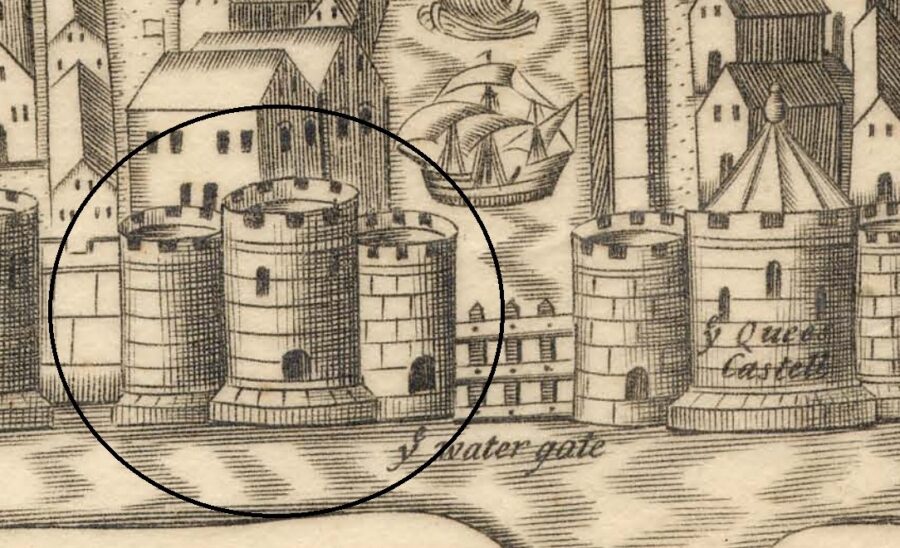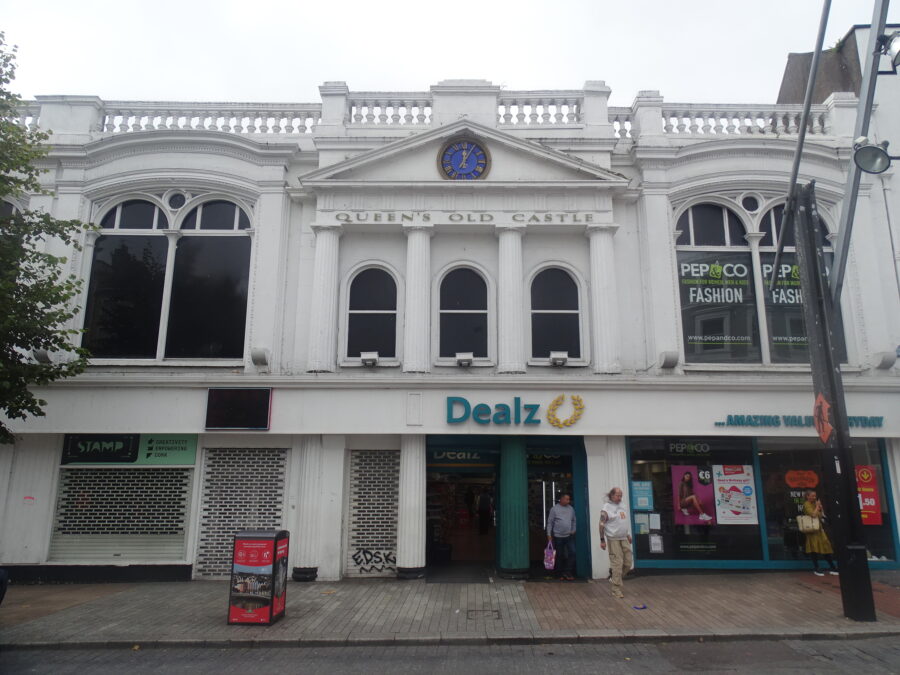
Kieran’s Our City, Our Town Article,
Cork Independent, 13 June 2024
Cork: A Potted History Selection
Cork: A Potted History is the title of my new local history book published by Amberly Press. The book is a walking trail, which can be physically pursued or you can simply follow it from your armchair. It takes a line from the city’s famous natural lake known just as The Lough across the former medieval core, ending in the historic north suburbs of Blackpool. This week is another section from the book.
The King’s Castle:
The Watergate complex, comprising Cork’s medieval port, docks and custom house, would have been impressive. The gate allowed controlled access into a private world of merchants and citizens – the masts of ships, vessels filled with goods and people, creaking as their wooden hulls knocked against the stone quays. Built between two marshy islands, in the middle of a walled town, its entrance was between the two castles – King’s Castle and Queen’s Castle. King’s and Queen’s Castles are signified in the city’s coat of arms with a ship travelling from one tower to another and the latin inscription, Statio Bene Fida Carinis, which means A Safe Harbour for Ships.
In the early seventeenth century the lower part of King’s Castle was converted in two – the county prison, and the upper floor used as the County Courthouse, respectively.
In 1680 a new purpose built court house was constructed. It was described as a plain, accommodating structure with grand jury rooms. In 1806 a further new courthouse was constructed on the site and was renamed King’s Old Castle. It consisted of a handsome parliament of Portland stone supported by fluted Doric columns resting on a rustic basement. The cost of building was £10,000.
After the erection of the new courthouse on great George’s Street these premises for no longer required for the County Court services. The building passed into the possession of William Fitzgibbon who established the Queens Old Castle. The name was a compliment to Queen Victoria who was then reigning.
William Fitzgibbon was a native of Rathkeale County Limerick. His first drapery store was in Cork’s Mallow Lane, now Shandon Street, and proved a great success. After a few years he transferred the business to Great Georges Street and assembled bit by bit leaseholds and fee simple properties including the disused Cork Courthouse. In 1846 the new drapery warehouse was ready for occupation. It was the first fully equipped monster drapery warehouse in the United Kingdom. It was one of the most popular department stores in Cork.
In 1873 Mr Victor Beare Fitzgibbon of Queen’s Old Castle, Messrs. Alexander Grant and T Lyons, merged the three business into a limited liability company under the title of T Lyons and Co, Limited – and which was focussed on the Queen’s Old Castle warehouse. The three businesses formed the principal members of the directorate. They established a trade, which in point of magnitude and volume had never before been equalled in the annals of commercial enterprise in the South of Ireland. All three firms though continued their respective operations.
The Queen’s Old Castle survived the Burning of Cork in 1920. In 1928 renovation works were entrusted to the firm of Mr T Kelleher, Millerd Street with architectural drawings by Messrs Chillingworth and Levie. Amongst the changes the old shop front was completely removed as well as the heavy masonry piers that supported the Portland stone dork columns. Steelwork encased would close glass mirrors, substituted for the columns and occupied very little space.
There was further change in 1996 when Clarendon Properties bought the building. It closed for refurbishment and when it re-opened there were just two main tenants – catalogue retailer, Argos and Virgin Music Megastore. Both stores have since closed and a Dealz is the only business currently occupying the site.
St Peter’s Church:
Present day, St Peter’s Church, is the second church to be built on its present site overlooking North Main Street. The first church was built sometime in the early fourteenth century. In 1782, the church was taken down and in 1783, the present limestone walled church, was begun to be built. At a later stage, a new tower and spire were added to the basic rectangular plan. The new spire though had to be taken down due to the marshy ground that it was built on.
In recent years and in accordance to the aims of the pilot project of the Cork Historic Centre Action and the finance of Cork City Council and operational support of Cork Civic Trust, St Peter’s Church has been extensively renovated and opened as an arts exhibition centre.
One of the most interesting monuments on display in the church is the Deane monument. This monument, dating to 1710, was dedicated to the memory of Sir Matthew Deane and his wife and both are depicted on the monument, shown in solemn prayer on both sides of an altar tomb.
Now a deconsecrated space, a historic graveyard was attached to the medieval parish church of St Peter. The graveyard is in use as a public amenity space.
In 1750, Charles Smith in his History of Cork in 1750 recorded that some of the gravestones had ‘dates as old as the year 1500”.
Antiquarian John Windele records the discovery in 1838, of numerous tombstones belonging to the “olden era of this Church, forming the foundations of the building which preceded its present steeple. shows to what uses the ancient remains connected with this building have been converted”.
Certainly, the site has undergone modification and possibly significant disturbance to underlying deposits. Burials within the church would have been substantially dislocated during the demolition works of 1782 and the construction of the present church.
During renovations to the church building during the 1990’s skeletal remains were uncovered beneath the floor.
Since 1975, Cork City Council has maintained the graveyard when it was then laid out as a park. There are thirteen headstones lining the northern boundary wall towards the back of the church. The headstones that are legible date to the eighteenth century. They are not in their original spot. The chest tomb of William Rogers (1686), also which remains in its original position in the graveyard.
Captions:
1257a. Sketch of King’s Castle c.1600 from George Carew’s Pacata Hibernia (source: Cork City Library).
1257b. Queen’s Old Castle, present day (picture: Kieran McCarthy).
